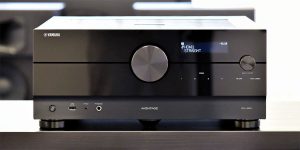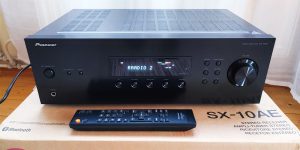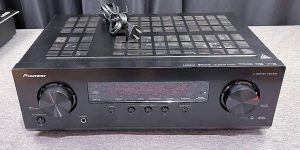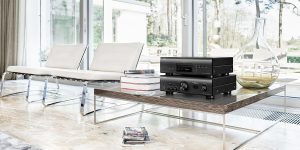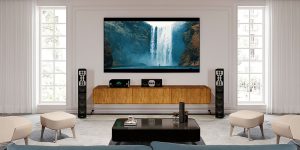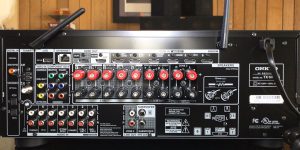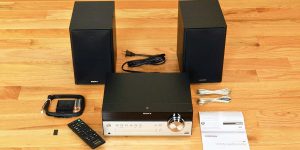Many audiophiles, professional musicians, and ordinary people still argue about the Marantz vs. Denon ratio. The choice is ultimately yours, but in this review, where I compare the best receivers, I have tried to explain the difference by introducing the reader to the brands and their products of the same rank.
It will be a fascinating journey for you, as it was for me, because Marantz and Denon are brands that compete with each other but, at the same time, are very connected. It’s all about the fact that Denon merged with Marantz in 2002 to form D&M Holdings Inc. and, in 2017, became part of the Sound United LLC (Masimo) group of companies. This way, they keep up with the times by releasing similar products in similar segments but maintaining their authenticity through years of history and adherence to traditions that help them remain unique. That’s where we’ll start.
Brief history of Denon
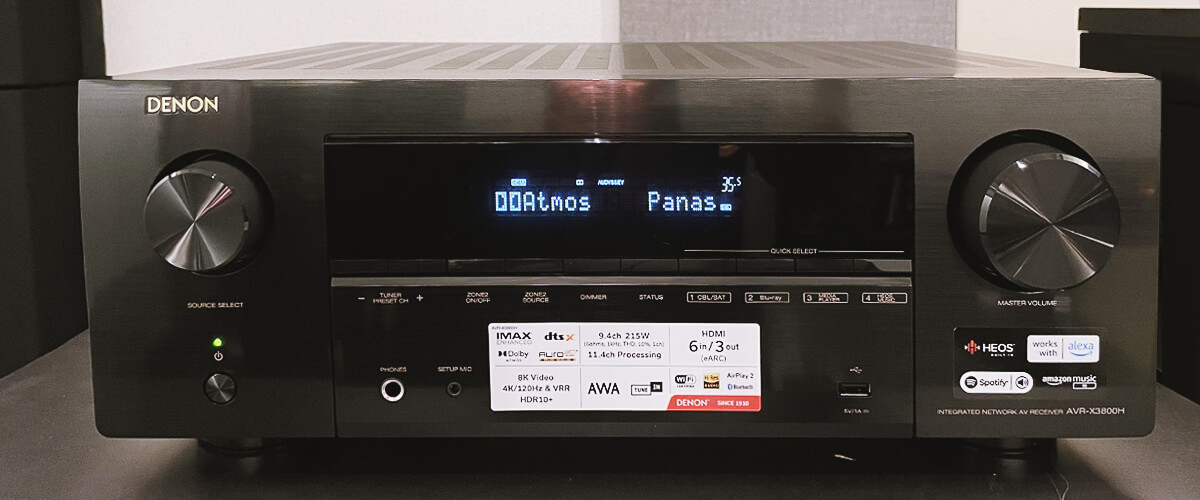
Founded by American Frederick Whitney Horn in Japan in 1910, the company was originally called Nippon Chikuonki Shoukai (Japan Recorders Corporation) and produced records and gramophones. So, it’s no surprise that the brand can be trusted for sound. The Denon brand was born in 1930 and is still mega-popular among consumer and professional audio equipment fans.
Officially, the company has long celebrated its 100th anniversary and has been a pioneer in innovation for a century, releasing the first professional disk recorder in 1939, the first PCM recorder in 1970, and many more between and after. Denon was also the first to introduce Dolby Digital surround sound.
You can learn more about the brand’s rich, long history by clicking here.
Brief history of Marantz
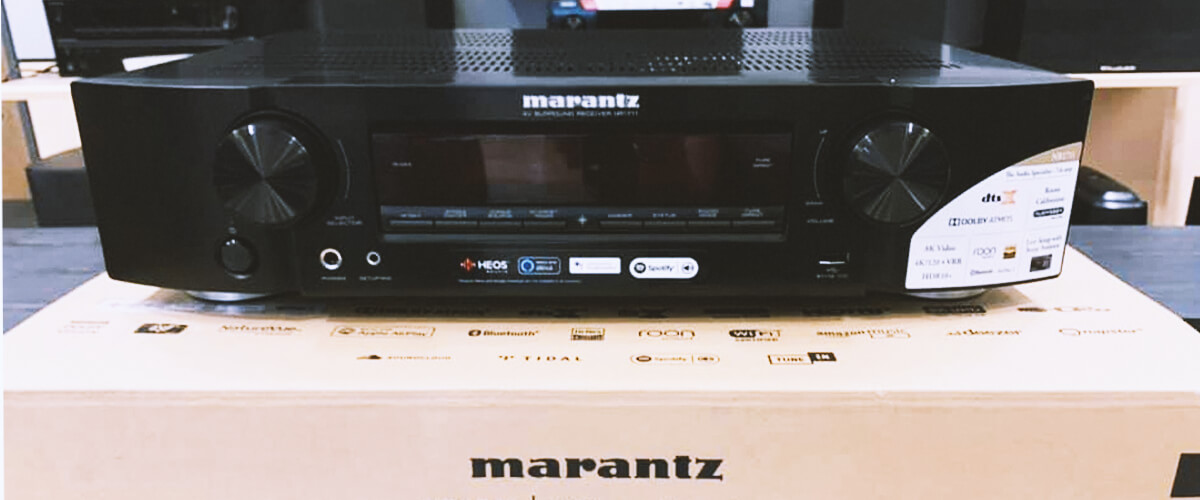
In 1952, amateur musician Saul Bernard Marantz built his first Audio Consolette amplifier on his kitchen table, apparently not satisfied with the quality of the equipment at the time. Successfully expanding the business and selling his first batch, flooded with new orders, he opened Marantz company and a factory in Woodside, Queens, New York, as early as 1953. In 1980, Marantz produced one of the first CD players, keeping up with modernity and playing along with the digital age.
Marantz celebrated its 70th anniversary in 2023. Today, the company is still committed to analog sound, creating really top-notch devices for listening to vinyl. Still, it is also a modern and technologically advanced brand whose quality is revered by audiophiles and professionals worldwide.
If you would like to learn more about Marantz, just follow this link.
General sound differences between Marantz and Denon receivers
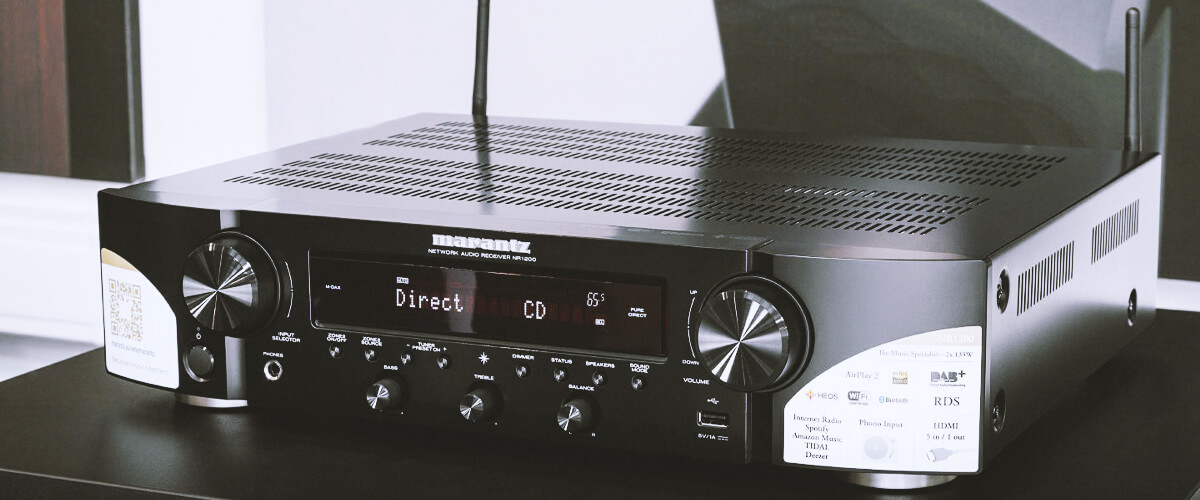
Frankly speaking, unless you have a fine audiophile ear, it’s pretty hard to pick out any general sonic differences between brands. The differences largely depend on your additional equipment (sound source, speakers, room, etc.). However, according to the “established” opinion among advanced users, Marantz receivers are considered to sound “warmer” and more designed for listening to music. They are ideal for vinyl players. In turn, Denon, according to many experts, has qualities that are “supposedly” more suitable for viewing video content. In short, Denon’s bass frequencies are denser and brighter than Marantz’s. But on the upper tonalities, there is practically no difference.
Also, many other users comparing Marantz and Denon sound quality claim that the built-in “algorithms” of autocorrection (for example, Audyssey XT32 or Dirac Live), which people use when adjusting their receiver, play a big role in how the receiver “sounds”. I completely agree with this statement. If you turn off this option, the sound of receivers in the same price category will be virtually indistinguishable, especially if you are not a connoisseur.
Another important aspect in comparing these brands is that both Marantz and Denon are part of the parent company, Sound United. Therefore, the internal components of the receivers are often the same, and the companies’ advanced technologies are represented in both brands. And, although Marantz is considered a VIP brand and Denon a more affordable option, in the opinion of many, Marantz is Denon in a different package.
Based on the above, you’ll have to choose between Denon and Marantz brands rather than models. And I can only advise you to choose what you like more aesthetically unless you are financially constrained, as Marantz is almost always more expensive in the same category.
Our criteria for choosing Denon and Marantz receivers for comparison
For this review and my other articles, I tried to select optimal Marantz versus Denon models in different price segments that can serve different purposes and tasks. My main selection criteria were my listening experience, availability of necessary built-in features (support for modern video technologies, surround sound formats, Bluetooth, Ethernet/Wi-Fi/streaming services, etc.), a sufficient number of inputs and outputs, and price.
Mid-priced Denon and Marantz AVRs comparison
Denon AVR-X3800H vs Marantz CINEMA 50
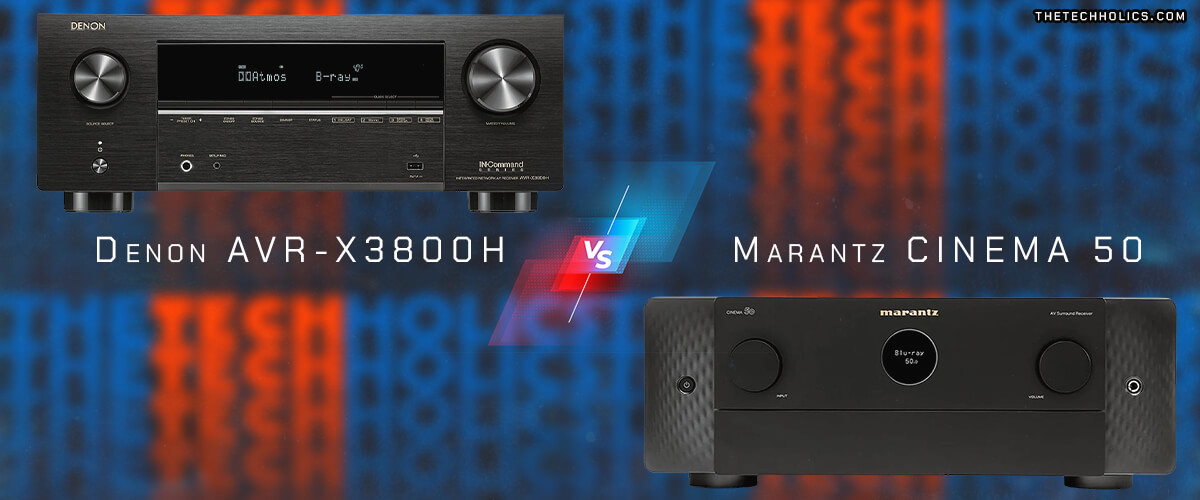
The most striking confrontation between Denon vs. Marantz in the mid-range segment are the AVR-X3800H and CINEMA 50 9-channel models released in 2022. When you look at the specifications presented in this review, you can see that they are similar, almost like twins, except for a few points that account for the higher cost of the Marantz and probably also affect the overall sound.
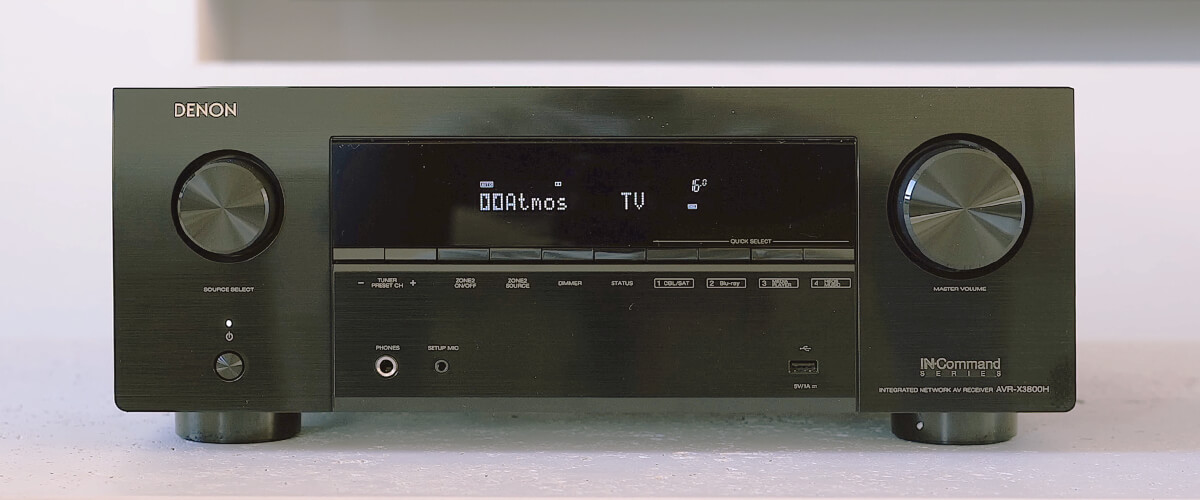
For example, the CINEMA 50 delivers slightly more power. Given the excellent THD of 0.08%, this difference may be slight but noticeable if you consider loudness an advantage.
Further, Marantz owns brand-exclusive technologies such as Current Feedback Topology (providing very low phase shift) and Hyper Dynamic Amplifier Module (a discrete circuit board for greater sonic detail). But all of this is intended for the ears of true audiophiles. During my testing, I also appreciated the Marantz Dialog Enhancement and Bass Sync features
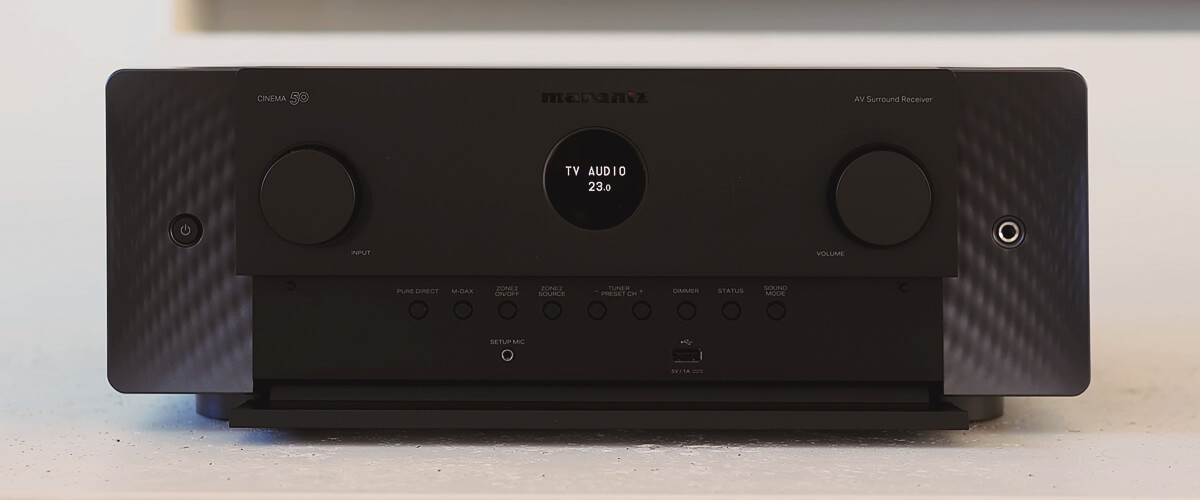
Thus, I would conclude that the choice in favor of Marantz CINEMA 50 should be made only by those who really understand the nuances of sound. For the average user with sufficient finances, the Denon AVR-X3800H will satisfy you with its quality and functionality to the fullest extent.
Denon AVR-X3800 key specs
- Channels: 9.4.
- Power output: 105W/8 Ohm, 135W/6 Ohm.
- HDMI inputs/outputs: 6/3.
- Video functions: 8K/60Hz, 4K/120Hz pass-though, upscaling up to 8K.
- Bluetooth/Wi-Fi: yes/yes.
- Streaming services: AirPlay 2, Spotify, TuneIn, Deezer, Tidal, Netflix, Amazon Prime.
- Supports: HDMI ARC, HDMI eARC, HDMI CEC, HDCP2.3, HDR10+, Dolby Vision.
- Surround sound: DTS:X, DTS Neural:X, DTS Virtual:X, Dolby Atmos, DTS HD Master, Dolby TrueHD, Dolby Atmos Height Virtualization, Dolby Atmos Music, Auro 3D.
Marantz CINEMA 50 key specs
- Channels: 9.4.
- Power output: 110W/8 Ohm, 150W/6 Ohm.
- HDMI inputs/outputs: 6/3.
- Video functions: 8K/60Hz, 4K/120Hz pass-though, upscaling up to 8K.
- Bluetooth/Wi-Fi: yes/yes.
- Streaming services: AirPlay 2, Spotify, TuneIn, Deezer, Tidal, Netflix, Amazon Prime.
- Supports: HDMI ARC, HDMI eARC, HDMI CEC, HDCP2.3, HDR10+, Dolby Vision.
- Surround sound: DTS:X, DTS Neural:X, DTS Virtual:X, Dolby Atmos, DTS HD Master, Dolby TrueHD, Dolby Atmos Height Virtualization, Dolby Atmos Music, Auro 3D, IMAX Enhanced, 360 Reality Audio, MPEG H.
Denon AVR-X3800H
Marantz CINEMA 50
Premium Denon and Marantz AVRs comparison
Denon AVR-X6700H vs Marantz SR8015
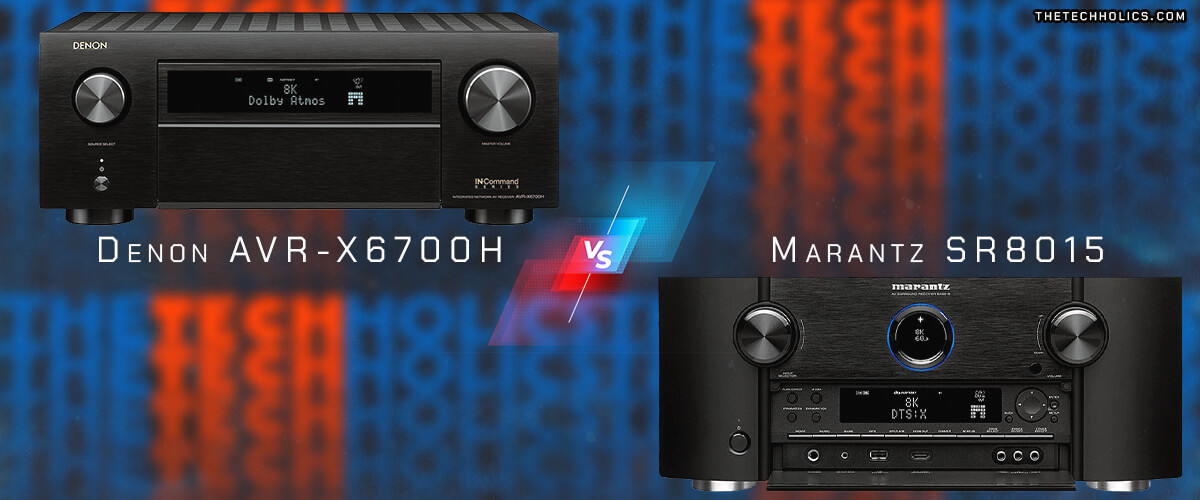
In this category, the 2020 AVR-X6700H from Denon and SR8015 from Marantz are also identical in their video and audio capabilities. Although the first AV receiver loses to the second in the number of connectors (1 input and 1 output port each less), there are still some points that I paid close attention to.
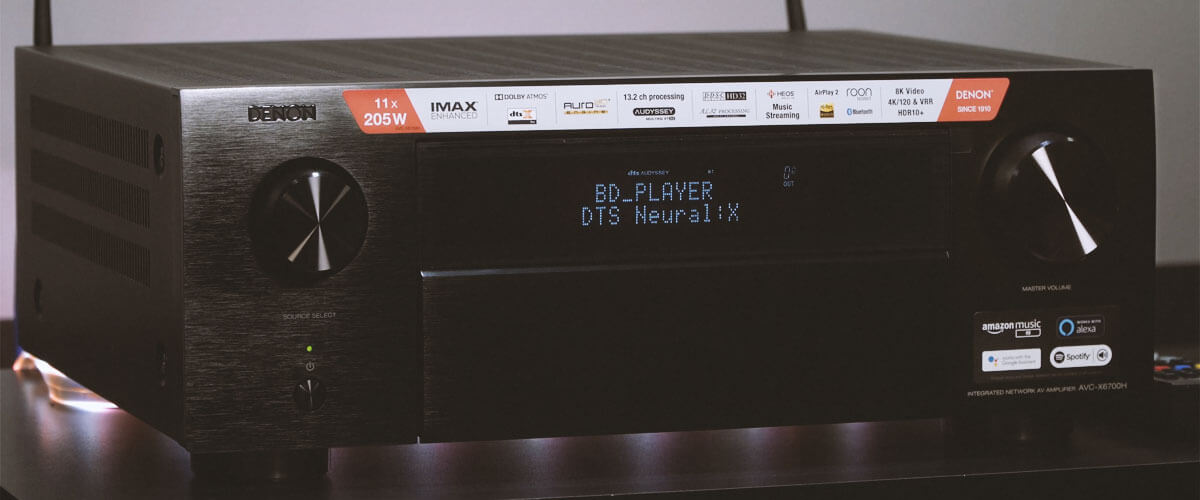
The AVR-X6700H incorporates a 32-bit D.D.S.C. chip, and this unique development of the brand directly affects the quality of DAC signal processing and, as a result, surround sound. The second technology worth mentioning is ALPHA Processing, which cleans and details the information and helps to reproduce the signal without interference. Unlike the first comparative review, this time, Denon has Dialog Enhancement (Marantz doesn’t have it). And believe me, all three items make the AVR-X6700H surround sound incredible.
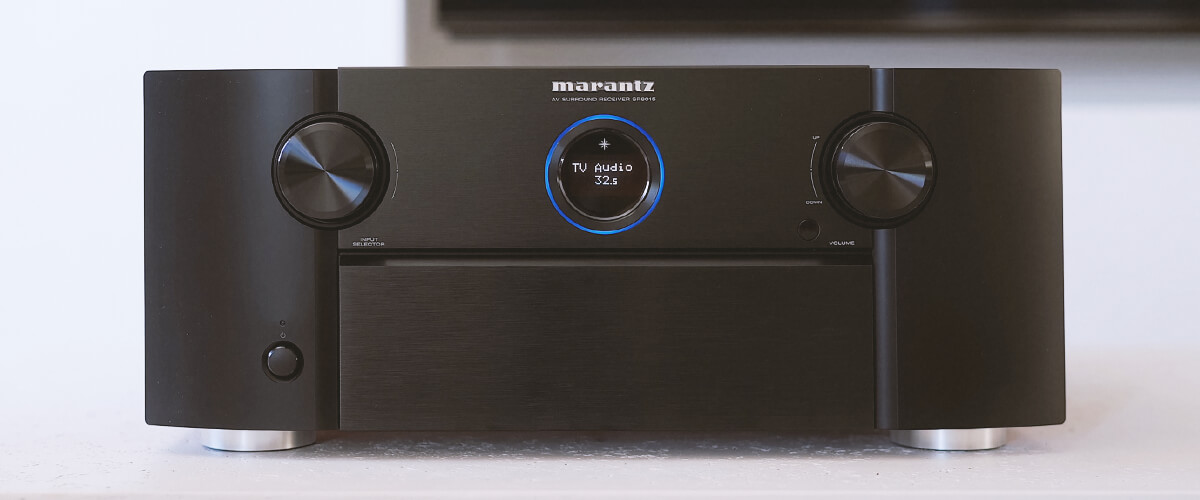
As for the overpriced Marantz SR8015, as usual, it is due to the use of more expensive components, for example, a more expensive toroidal transformer.
If I chose Marantz or Denon in this category, I would prefer the AVR-X6700H, as the manufacturer has created a terrific surround-sound movie receiver. But the SR8015 model won’t be your worst choice if you’re more partial to stereo and detail quality.
Denon AVR-X6700H key specs
- Channels: 11.2.
- Power output: 140W/8 Ohm, 175W/6 Ohm.
- HDMI inputs/outputs: 7/3.
- Video functions: 8K/60Hz, 4K/120Hz pass-though, upscaling up to 8K.
- Bluetooth/Wi-Fi: yes/yes.
- Streaming services: AirPlay 2, Spotify, TuneIn, Deezer, Tidal, Netflix, Amazon Prime.
- Supports: HDMI ARC, HDMI eARC, HDMI CEC, HDCP2.3, HDR10+, Dolby Vision.
- Surround sound: DTS:X, DTS Neural:X, DTS Virtual:X, Dolby Atmos, DTS HD Master, Dolby TrueHD, Dolby Atmos Height Virtualization, Dolby Atmos Music, Auro 3D.
Marantz SR8015 key specs
- Channels: 9.4.
- Power output: 140W/8 Ohm, 175W/6 Ohm.
- HDMI inputs/outputs: 8/3.
- Video functions: 8K/60Hz, 4K/120Hz pass-though, upscaling up to 8K.
- Bluetooth/Wi-Fi: yes/yes.
- Streaming services: AirPlay 2, Spotify, TuneIn, Deezer, Tidal, Netflix, Amazon Prime.
- Supports: HDMI ARC, HDMI eARC, HDMI CEC, HDCP2.3, HDR10+, Dolby Vision.
- Surround sound: DTS:X, DTS Neural:X, DTS Virtual:X, Dolby Atmos, DTS HD Master, Dolby TrueHD, Dolby Atmos Height Virtualization, Dolby Atmos Music, Auro 3D, IMAX Enhanced.
Denon AVR-X6700H
Marantz SR8015
Budget Denon and Marantz AVRs comparison
Denon AVR-S660H vs Marantz NR1510
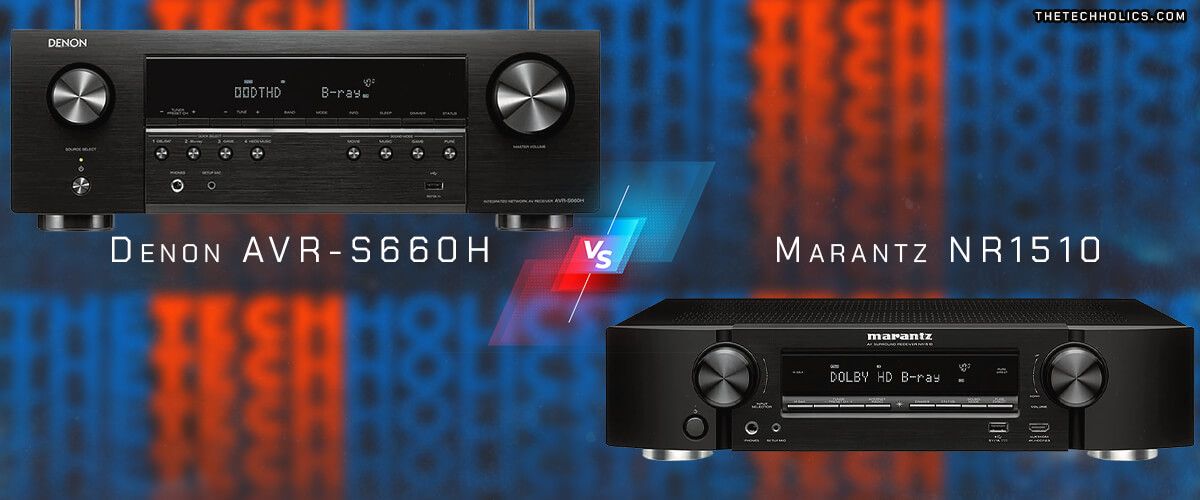
If in more expensive lines, it is quite difficult to find differences between brands in the usual functions of audio and video, and you pay more attention to unique technologies, then with budget 5-channel Denon AVR-S660H and Marantz NR1510, the case is much simpler. To start with, Denon offers 75W per channel, compared to 50W from Marantz, which may influence your choice because the representatives have almost the same price in this category.
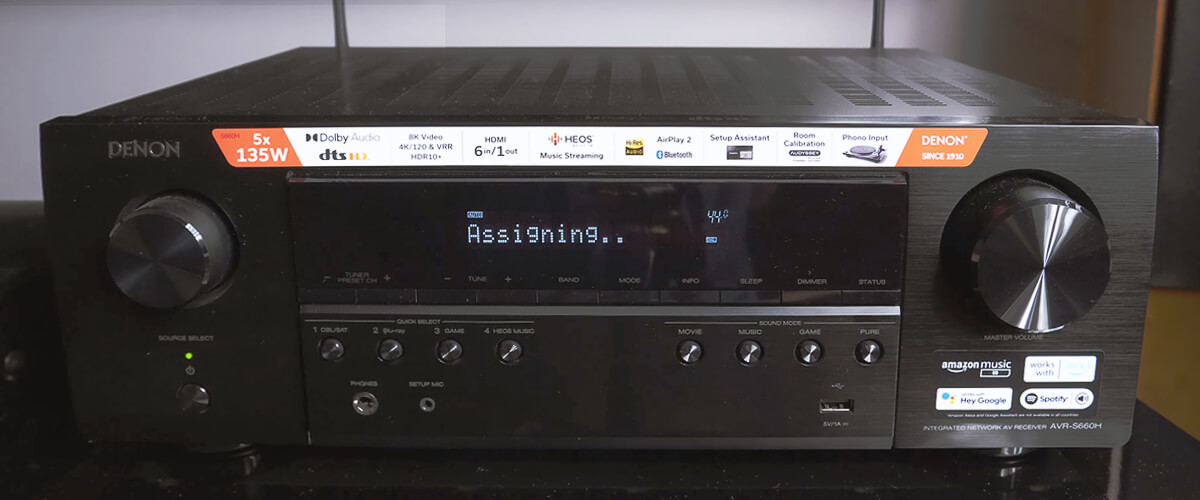
On the point of video capabilities, Denon is also ahead, as 3 HDMI 2.1 ports support 8K video, while Marantz is available only 4K video. Most likely, this is due to the year of release (2021 for AVR-S660H and 2019 for NR1510), since from the 2021 year, almost all, even the cheapest AV receivers, are equipped with at least 1 HDMI of the latest version.
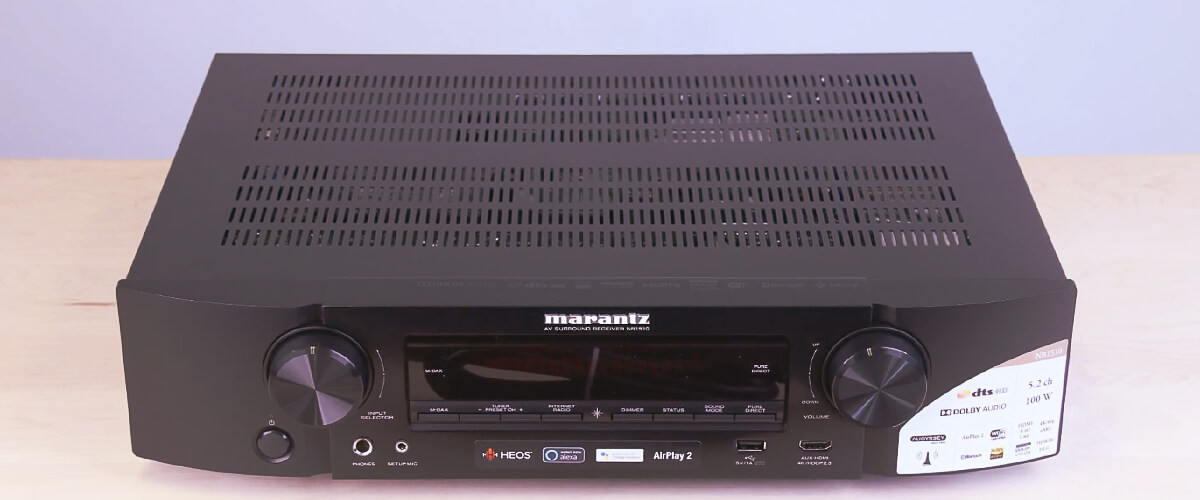
I didn’t notice any difference In surround sound overall soundscape, except that the Marantz NR1510 has Dialog Level Adjustment, which is excellent.
So, I would recommend the Denon AVR-S660H for those who value the overall movie-viewing experience, including high-quality video. And Marantz will suit those needing a device in a narrow case with pretty good surround sound.
Denon AVR-S660H key specs
- Channels: 5.2.
- Power output: 75W/8 Ohm.
- HDMI inputs/outputs: 6/1.
- Video functions: 8K/60Hz, 4K/120Hz pass-though, upscaling up to 8K.
- Bluetooth/Wi-Fi: yes/yes.
- Streaming services: AirPlay 2, Spotify, TuneIn, Deezer, Tidal, Netflix, Amazon Prime.
- Supports: HDMI ARC, HDMI eARC, HDMI CEC, HDCP2.3, HDR10+, Dolby Vision.
- Surround sound: DTS HD Master, DTS:X, DTS Virtual:X, Dolby Atmos, Dolby TrueHD.
Marantz NR1510 key specs
- Channels: 5.2.
- Power output: 50W/8 Ohm, 60W/6 Ohm.
- HDMI inputs/outputs: 6/1.
- Video functions: 4K/60Hz pass-through.
- Bluetooth/Wi-Fi: yes/yes.
- Streaming services: AirPlay2, Deezer, Tidal, Pandora, SiriusXM, Napster, SoundCloud, Amazon Music, Amazon Music HD, Mood mix.
- Supports: HDMI ARC, eARC, HLG, HDCP2.3, HDR10, Dolby Vision.
- Surround sound: DTS HD Master.
Denon AVR-S660H
Marantz NR1510
Stereo Denon and Marantz receivers comparison
Denon DRA-800H vs Marantz NR1200
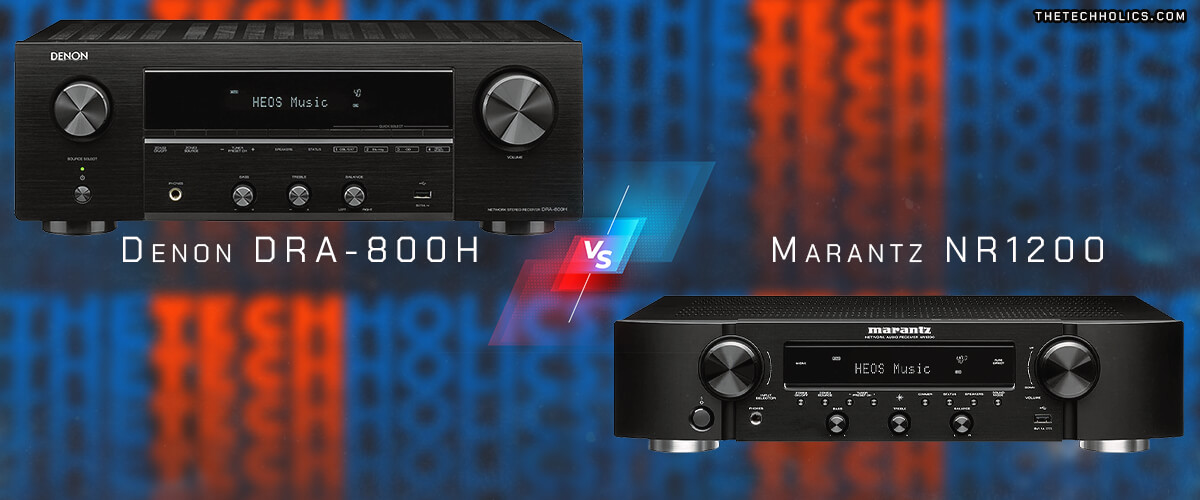
I’ve selected two 2019 models at an identical price point for the remaining Denon and Marantz stereo receiver categories. You won’t find many differences between the DRA-800H and NR1200, but the following factors may drive your choice.

As usual, I’ll start with power, and here, Denon tops its competitor with 100W per channel versus 75 (with both providing a THD of 0.08%). Plus, it has gold-plated RCA terminals, unlike its competitor. That said, the NR1200 has a slim design. In addition to both models’ HEOS built-in, the DRA-800H also offers multi-zone audio for 2 rooms, while the Marantz does not.

Both in video capabilities (support for 4K video in HDR) and compatibility with streaming services and voice assistants, the receivers are indistinguishable. And they sound equally superb with some unique nuances of warmth and precision inherent to each brand.
The choice between the DRA-800H and NR1200 depends more on your placement options. If you have little space, a very small room (about 150 square feet), then the narrow Marantz receiver will do. But in case you live in “chambers” up to 300 square feet, and you have the opportunity to place a standard receiver – you can safely opt for Denon. Either way, your decision will be the right one.
Denon DRA-800H key specs
- Channels: 2.2.
- Power output: 100W/8 Ohm, 120W/6 Ohm.
- HDMI inputs/outputs: 5/1.
- Video functions: 4K/60Hz pass-through.
- Bluetooth/Wi-Fi: yes/yes.
- Streaming services: AirPlay2, Deezer, Tidal, Pandora, SiriusXM, Napster, SoundCloud, Amazon Music, Amazon Music HD, Mood mix.
- Supports: HDMI CEC, HDCP2.3, HLG.
- Surround sound: has not.
Marantz NR1200 key specs
- Channels: 2.2.
- Power output: 75W/8 Ohm, 100W/6 Ohm.
- HDMI inputs/outputs: 5/1.
- Video functions: 4K/60Hz pass-through.
- Bluetooth/Wi-Fi: yes/yes.
- Streaming services: AirPlay2, Deezer, Tidal, Pandora, SiriusXM, Napster, SoundCloud, Amazon Music, Amazon Music HD, Mood mix.
- Supports: HDMI ARC, HLG, HDCP2.3, HDR10.
- Surround sound: DTS HD Master, DTS Neural:X, Dolby TrueHD, Dolby Surround, Dolby Digital Plus, Dolby Atmos Height Virtualization, Dolby Atmos, Auro-3D, IMAX Enhanced, Multichannel stereo.
Denon DRA-800H
Marantz NR1200
FAQ
Is Denon and Marantz the same company?
Why are Marantz receivers so expensive?
Are Denon and Marantz a high-end brand?
Which brand typically offers a more user-friendly interface?
Which brand offers a wider range of receiver options for different budgets?
We are supported by our audience. When you purchase through links on our site, we may earn an affiliate commission at no extra cost to you.
Our newsletter
* We will never send you spam or share your email with third parties

![Best Budget Receivers [Reviewed and Tested]](https://thetechholics.com/wp-content/uploads/2023/10/best-budget-av-receiver-300x150.jpg)
![Best 9-Channels AV Receivers [Reviewed and Tested]](https://thetechholics.com/wp-content/uploads/2023/10/best-9-2-receiver-300x150.jpg)

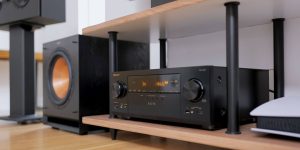
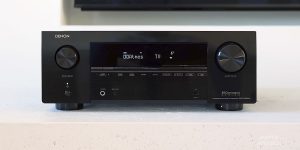
![Pioneer vs Denon Receivers [Top Models Compared and Tested]](https://thetechholics.com/wp-content/uploads/2023/10/denon-vs-pioneer-review-300x150.jpg)
